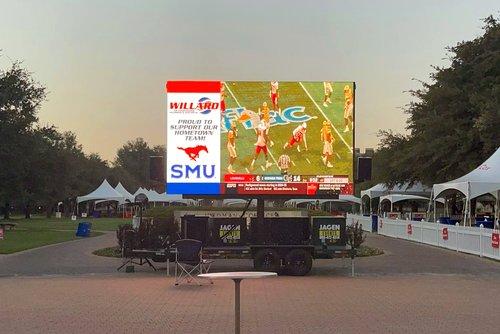Notifications

6 minutes, 32 seconds
-4 Views 0 Comments 0 Likes 0 Reviews

In the world of events—whether it's a concert, conference, wedding, or product launch—visuals play a critical role in captivating and engaging audiences. One of the best ways to enhance visual impact is through LED screens. But with so many options available, choosing the right LED screen rental size for your event can be challenging. The wrong size could result in poor visibility or wasted resources. In this article, we'll walk you through everything you need to consider to make the best choice.
Why Screen Size Matters
Choosing the right LED screen size is more than just making sure "everyone can see." The size directly impacts audience engagement, content clarity, and overall event atmosphere. Too small, and your message gets lost; too big, and it can be distracting or unnecessarily expensive.
Step 1: Understand Your Event Type and Purpose
The type of event you're hosting significantly influences screen size:
Corporate Events & Conferences: These usually require clear visuals for presentations, slides, and live speaker feeds. Screens should be large enough to display text clearly from a distance but not so large that they dominate the room.
Concerts & Music Festivals: These events often require large, high-brightness screens that can be seen clearly from hundreds of feet away. Multiple screens or modular panels may be used to accommodate a large crowd.
Weddings & Private Parties: Depending on the venue size, a medium to large screen is typically sufficient for slideshows, live feeds, or ambient visuals.
Trade Shows & Exhibitions: Here, you’ll want a screen large enough to attract attention, but compact enough to fit within booth space.
Step 2: Calculate Viewing Distance
A good rule of thumb when selecting screen size is to consider the maximum viewing distance. Here's a basic formula:
Minimum screen height = Max viewing distance / 6
So, if your audience will be 60 feet away from the screen, you should consider a screen at least 10 feet tall.
For close viewing (less than 10 feet): Smaller, high-resolution screens work well.
For medium distances (10–50 feet): Moderate-sized screens with standard pixel pitch.
For long distances (50 feet and more): Larger screens with lower resolution can suffice.
Step 3: Consider Screen Resolution and Pixel Pitch
Size alone doesn’t guarantee quality. Resolution and pixel pitch—the distance between individual pixels—are just as important.
Low pixel pitch (e.g., 1.5mm – 2.5mm): Ideal for indoor use and short viewing distances.
Higher pixel pitch (e.g., 3.9mm – 6.9mm): Better for larger screens and long-distance viewing, especially in outdoor settings.
A large screen with poor resolution can appear blurry or pixelated up close, while a high-resolution screen may be wasted in a huge open space.
Step 4: Analyze Venue Size and Layout
The dimensions and layout of the venue will determine not only what size screen can physically fit but also how it should be placed.
Indoor venues might have height restrictions, rigging limitations, or ambient light that impacts visibility.
Outdoor venues require larger, brighter screens that are weather-resistant and viewable in daylight.
Also, think about audience seating or standing arrangements. Will people be spread out or concentrated in one area? This affects both screen height and angle.
Step 5: Evaluate Content Type
What kind of content will be displayed?
Text-heavy presentations require screens that can clearly display small fonts.
Live video feeds need higher resolution and refresh rates.
Dynamic visuals like music videos or animations benefit from larger screens with vivid colors and high contrast.
The complexity of your visuals should influence both screen size and quality.
Step 6: Factor in Budget
Larger, high-resolution rental led display screen comes at a higher rental cost. But don’t let cost be the only deciding factor. A too-small screen can hurt the effectiveness of your event, while overspending on a giant screen might not yield proportional benefits.
Ask your LED screen rental provider for size and price comparisons, and always ensure the selected option suits your event’s objectives.
Step 7: Consult with a Professional
It’s always a good idea to consult with your screen rental provider or an AV expert. They can help assess your venue, event type, and content needs to recommend the optimal screen size and configuration. Some companies even offer on-site evaluations and 3D renderings to visualize screen placement before the event.
Final Thoughts
Choosing the right LED screen size is a balancing act between visibility, venue constraints, content demands, and budget. By understanding your event’s unique needs and planning accordingly, you can create an immersive experience that leaves a lasting impression on your audience.
So, before you book your next LED screen rental, consider these key factors—and ensure your event truly shines.

